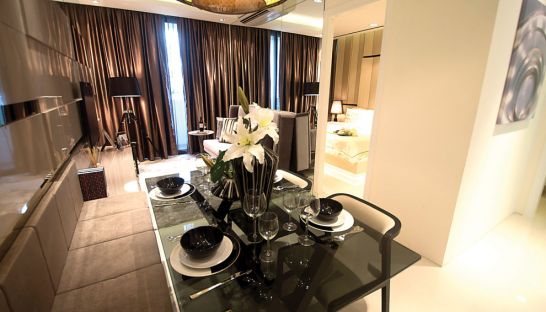Rithy Sear grew up in a land of fear and became a refugee, before returning to eventually become a property mogul
Like so many of his successful compatriots, director of World Bridge Land Rithy Sear’s story is one with a backdrop of seemingly insurmountable odds.
Born in Phnom Penh in 1970, Sear secretly learned English as a young man with anyone he could find who knew the language, under trees, playing a dangerous cat-and-mouse game with the Khmer Rouge, before nearly losing his life at sea and becoming a refugee.
Today Sear’s World Bridge Land is in partnership with Singapore’s Oxley Holdings, who have invested $300 million to construct what the partners describe as “a quality, lifestyle-focused residential building” in the Tonle Bassac district of Phnom Penh very close to the Australian Embassy.
The Bridge is a twin-towered, cross-purpose residential and commercial building and is slated for completion in 2018. At a sky-scraping 45 storeys, The Bridge is set to change the Phnom Penh skyline and revitalise the now dusty stretch of National Assembly Boulevard it is being built on.
Besides 762 one-to-three bedroom apartments, penthouses and residential units, the project will also include 963 SoHo units (mixed office, residential studios). The Bridge will have its own shopping facilities, but will also offer residents the advantage of being only minutes from the soon-to-open Aeon Mall.
But if you ask Sear whether he had any idea as a young man that such an achievement could be even a remote possibility for him as an adult, he shakes his head – almost with a kind of bewilderment – and says: “No, my life back then was terrible, very, very bad.”
It was so bad that at the age of 18, he decided to make a bold escape.
“I took a boat to Australia,” he says. “But the boat sank off the coast of Sumatra. I was in the ocean for 12 hours before an Indonesian fishing boat rescued me, and then I was sent to the Galang Refugee Camp.”
The Galang Refugee Camp in Indonesia’s Riau Islands accommodated some 250,000 Indochinese refugees from 1979 to 1996.
“I had some basic English, and the United Nations were involved in the refugee camps,” says Sear. “So in 1992, I volunteered to come back to Cambodia and work with the United Nations Transitional Authority in Cambodia (UNTAC).”
Sear’s role was in the
logistics arm of UNTAC, which put him close to the formidable difficulties of all UNTAC movements in and out of Cambodia.
“This gave me the experience I needed, and in 1993 [when UNTAC pulled out], I set up my own logistics company,” he says.
Seary says he subsequently went into the property business because he was convinced that the groundwork UNTAC had done in establishing democracy in Cambodia would eventually lead to prosperity.
“When the economy is booming, the main key is property,” he says, adding that he has become increasingly positive about the sector’s local prospects in the years since 2010.
“When you’re talking about property you’ve got to look at supply and you’ve got to look at growth, and when we look at gross domestic product (GDP) per capita growth, it’s strong here in Cambodia.”
The other factor to look at in terms of the property sector, according to Seary, is Cambodia’s demographics.
“We have a lot of young people here, and one thing’s for sure – not all these younger people will be able to own property and a house,” he says. “To do that, they’re looking at a minimum of $200,00, which means they can’t afford to buy land and houses.”
For Seary, the SoHo and condominium project he’s now working on with Oxley is the future.
“It’s a trend,” he says. “Young people who’ve studied abroad, who’ve travelled overseas, they’ve all seen another lifestyle, and they understand the convenience and security of living in condominiums.”
Meanwhile, Seary admits the local property sector faces problems, and that chief among these is infrastructure.
“It’s true, we still face a lot of problems,” he says. “But infrastructure is the government’s job, so let’s let the government get on with their job, and we in the business community can get on with ours.”
For Seary, the best thing a property developer can do as Cambodia slowly puts its shoulder behind the work involved in fixing everything that’s broken is to focus on location.
“I always say, you’ve got to think, location, location, location,” says Sear.
“In the case of The Bridge, when you look at the location, it’s great, and when people ask me about the infrastructure, I say, it may not be great, but it’s acceptable, and that’s more than most other property developments here can say.”
Source: Phnom Penh Post

